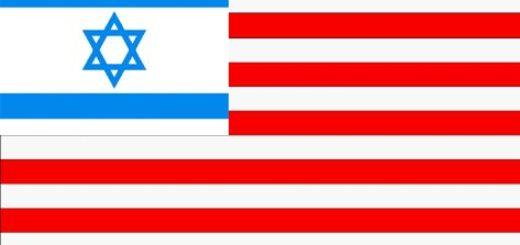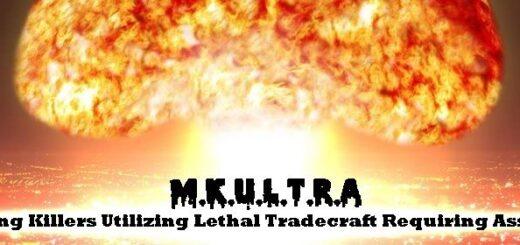VIENNA — The United States and other world powers reached a historic agreement with Iran here Tuesday, aimed at preventing the Islamic republic from building a nuclear weapon in return for the lifting of sanctions that have isolated the country and hobbled its economy.
President Obama, after announcing the agreement in Washington, quickly turned to what may be the more arduous task of selling the deal to skeptical lawmakers and U.S. allies in the Middle East.
“This deal demonstrates that American diplomacy can bring about real and meaningful change,” Obama told a nation that awoke Tuesday morning to news of the accord. He said it would ensure that Iran had no possibility to achieve a rapid nuclear weapons “breakout” for at least the next decade.
“Every pathway to a nuclear weapon is cut off,” Obama said.
In Vienna news briefings and Washington conference calls, senior administration officials joined the president in hailing the agreement — which limits Iran’s nuclear capability and imposes strict international monitoring in exchange for lifting international economic sanctions — as a way to make America and the world more secure.
Officials suggested that the deal might also help build momentum inside Iran to move away from radicalism and toward greater ties with the West.
“This deal offers an opportunity to move in a new direction. We should seize it,” Obama said. As a first order of business, one senior administration official said, Iran should seize “this important opportunity to make a humanitarian gesture” by releasing three jailed Americans it is holding and help find a fourth who disappeared there years ago.
Obama called congressional leaders late Monday to apprise them of the deal, and officials said he would expand his outreach in the coming days to include other key lawmakers. Under compromise legislation he signed in May, Obama must now give Congress 60 days to review the deal before using his executive power to waive statutory sanctions.
[The full text of the Iran nuclear deal]
“I welcome scrutiny of the details of this agreement,” Obama said. But he warned that he would veto any legislation that tried to prevent its implementation. “We do not have to accept an inevitable spiral into conflict. And we certainly shouldn’t seek it,” he said in response to Republican charges of appeasement.
House Speaker John A. Boehner (R-Ohio) said Tuesday that Obama had “abandoned” initial goals to strip Iran of its nuclear capability. “If, in fact, it’s as bad a deal as I think it is at this moment, we’ll do everything that we can to stop it,” Boehner told reporters.
Obama dismissed such threats as “posturing,” adding that “tough talk from Washington does not solve problems.”
Obama also called leaders in the Middle East, officials said. Reaction from U.S. allies ranged from concern among the Sunni monarchies of the Persian Gulf that lifting sanctions would increase Shiite Iran’s efforts to expand its powers, to Israeli Prime Minister Benjamin Netanyahu’s assessment that Iran would not only get a nuclear weapon out of the agreement, but also a “cash bonanza” to continue support for terrorism once sanctions are gone.
Secretary of State John F. Kerry, who spearheaded the talks with Iranian Foreign Minister Mohammad Javad Zarif, said the calls to keep pressuring Iran, rather than seeking a diplomatic solution, were unrealistic.
“Sanctioning Iran until it capitulates makes for a powerful talking point, and a pretty good political speech,” Kerry told reporters here. “But it’s not achievable outside a world of fantasy.”
In Tehran, a live broadcast of Obama’s White Houseremarks was interrupted for an address by President Hassan Rouhani, who said that “all of our objectives” had been realized in the planned lifting of sanctions and in what he said was the world’s recognition of Iran’s nuclear program for civilian use.
Rouhani also suggested that Iran’s relations with the world, particularly the West, would change. “If this deal is implemented correctly,” he said, “we can gradually eliminate distrust.”
There was no immediate public comment from Iran’s supreme leader, Ayatollah Ali Khamenei, who in some recent statements took a hard line on what Tehran would accept in an agreement.
The final accord came at the end of marathon Monday meetings that stretched past midnight, the culmination of more than two weeks of up-and-down endgame negotiations that the administration insisted it was willing to abandon if its own red lines were not accepted.
The agreement will not take effect until Iran is certified by the International Atomic Energy Agency to have met its terms — something that Iran says will happen in a matter of weeks but that Western diplomats have said could take at least until the end of the year. Administration officials said a new U.N. Security Council resolution, which would incorporate old sanctions resolutions and the conditions for lifting them, has been drafted and could be introduced within the next week. A U.S. trade embargo, as well as other non-nuclear U.S. sanctions, would not be affected.
A senior administration official, one of several who briefed reporters here and in Washington via conference call under imposed conditions of anonymity, said that until Iranian compliance is verified, an 18-month-old interim agreement restricting Iran’s nuclear activities will remain in place, as will sanctions.
In the end, the basic outline of the agreement hewed closely to, and in some areas expanded, a political framework reached in early April between Iran and the P5+1 — the United States, Britain, France, Russia, China and Germany — along with the European Union.
Iran has long insisted that it does not seek an atomic arsenal and wants the capability to produce nuclear fuel to power reactors for energy and medical applications.
The deal would reduce Iran’s number of centrifuges — which enrich uranium — from about 19,000 to about 6,000 and would limit the level of enrichment to 3.67 percent, far below weapons grade, for at least 15 years.
At Natanz, Iran’s primary enrichment facility, which has roughly 16,000 first-generation centrifuges, about 5,000 will remain operational.
In the underground facility at Fordow, about one-third of the 3,000 centrifuges will remain, with none of them to be used for uranium enrichment for at least 15 years. Russia is to help Iran convert the remaining Fordow centrifuges to isotope production.
Iran’s stockpile of low-enriched uranium will be reduced by 98 percent, from about 10,000 kilograms to 300. The remainder, administration officials said, would likely be sold to Russia.
Iran must also, with international assistance, remove the core of its heavy-water reactor at Arak, capable of producing spent fuel that can yield plutonium. “With international partnership, it will be redesigned and rebuilt,” a senior administration official said, and converted into a reactor “to produce zero weapons grade plutonium in normal use.”
The overall scope of the deal seeks to put Iran at least one year away from nuclear weapons “breakout” levels — the time it would take to produce enough fissile material for one nuclear bomb.
Beyond dissatisfaction with any deal allowing Iran to keep some components of its nuclear program, critics said that time limits of between 10 to 25 years on many of the restrictions effectively gave Iran a sanctions-free rein to develop nuclear weapons in the future.
Other issues raised have included the need for Iran to acknowledge previously concealed weapons activities; Iran’s insistence that current U.N. embargoes on sales and purchases of conventional weapons and ballistic missile technology be removed; the ability of international inspectors to conduct “anytime, anyplace” access to all declared and suspected Iranian nuclear facilities — including military installations — and mechanisms to settle disputes over possible violations and to “snap back” lifted sanctions if Iran cheated.
[The White House effort now shifts to Congress]
Based on leaks from the negotiations over the past several weeks, critics had charged that the United States had compromised on all those issues. The final deal provided ammunition for both sides in the upcoming political debate.
On the “possible military dimensions” of Iran’s previous nuclear programs, the IAEA said it signed an agreement Tuesday morning with Iran that allows international inspectors to resolve all such outstanding questions. It permits the agency to place more inspectors inside Iran, as long as their native countries have diplomatic relations with Iran — in other words, no Americans — and provides for high-tech monitoring equipment to be installed at nuclear facilities.
On conventional weapons and ballistic missiles, negotiators split the difference between lifting current U.N. prohibitions and keeping them indefinitely in place. The new U.N. resolution will include an ongoing eight-year missile ban and continuing prohibitions on most conventional weapons sales for five years,
Iran will also immediately adhere to the Additional Protocol of the international nuclear Non-Proliferation Treaty, which allows IAEA inspectors to demand access to any site in the country, including military facilities.
Once it submits a request to Iran to visit an “undeclared” facility, the IAEA and Iran will have 14 days to agree on the terms of access. If IAEA concerns are not met within that period, a joint commission made up of the seven negotiating countries — Iran and the United States and its partners — plus the European Union, will have up to seven days to review the dispute and decide what Iran needs to do.
Only five of the eight members need to agree, effectivelyensuring that Iran, Russia and China cannot prevail if they vote together. Iran then has three days to implement the decision. If it does not, “then we can begin snap-back” of sanctions, an administration official said.
Even as some lawmakers and allies criticized the deal Tuesday, a number of top nonproliferation experts offered largely positive reactions.
Robert Einhorn, who held senior nonproliferation and arms control positions in both the Clinton and Obama administrations — and was among a group of experts who last month expressed skepticism about the terms of a deal — said he was “pleasantly surprised” by the amount of detail in the agreement and its five annexes, totaling 109 pages.
While cautioning that he had not had a chance to read and fully digest the document, Einhorn, currently at the Brookings Institution, said he believed it met the administration’s objectives of “preventing a nuclear-armed Iran for a 10- to 15-year period.” The final deal, he said, made “very clear . . . that sanctions will not be suspended until Iran fulfills all of its key nuclear obligations.”
David Albright, president of the Institute for Science and International Security, described inspection mechanisms — requiring inspectors to produce evidence of cheating before teams can visit undeclared nuclear sites — as a troubling vulnerability in an otherwise promising accord. As a result, he said, “foreign intelligence services and the IAEA are going to have to find ways to be more intrusive.”
George Perkovich, head of the nuclear policy program at the Carnegie Endowment for International Peace, called the agreement “quite impressive,” including several “important, innovative elements” that detail prohibited Iranian activities and ensure transparency.
“There are nits to be picked,” Perkovich said, “but most of the critics are not actually interested in details. They don’t want any deal with the Islamic republic that allows it to have any nuclear capability or to obtain any sanctions relief.”
DeYoung reported from Washington. Greg Miller and Missy Ryan contributed to this report.
Read more:


















